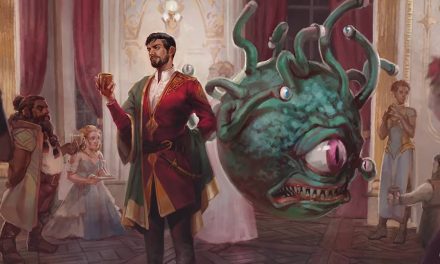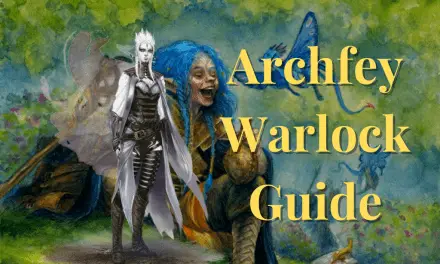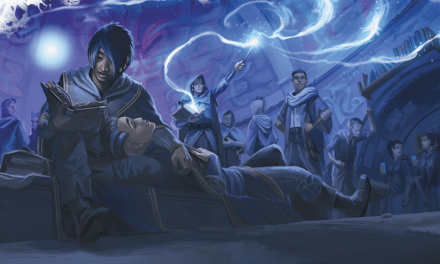It’s more than worth taking a moment to take a broad look at the schools of magic in Dungeons & Dragons.
While it’s certainly important for spellcasters to know the schools of magic in D&D, there is still a benefit for other characters to learn a little bit about each school.
Perhaps the party is tracking a dangerous Necromancer or seeking the counsel of a notoriously reclusive Diviner. They may have been told to be extra careful in the dungeon that they are adventuring into as the place is littered with dangerous Evocation traps.
Taking a moment to learn about the schools of magic in Dungeons & Dragons may be the difference between death and living to adventure another day.
So today we’re looking over the schools of magic in D&D 5e!
We’ll cover what each school focuses on and give a few examples of standout spells from each school.
Let’s begin!
The Schools of Magic in D&D 5e
The various spells in D&D 5e are grouped into “schools.”
In total, there are 8 schools of magic in D&D 5e:
- Abjuration
- Conjuration
- Divination
- Enchantment
- Evocation
- Illusion
- Necromancy
- Transmutation
Generally speaking, spells in each of these schools will have somewhat similar types of effects. While many casters will pull spells from a variety of schools, some may instead choose to prioritize a specific school of magic.
It all depends on the character’s role in the party and what you find the most interesting!
Knowing the various schools of magic also makes it easier to build a character around a specific concept that you might have in mind.
If you want to play a silver-tongued manipulator, you know you’ll likely be focusing heavily on enchantment magic but also pick up some illusion spells in case you need a distraction.
Or if you want to play a powerful blaster with a knack for solving problems with fireballs, you’ll know that you’ll be especially looking at what evocation magic you can learn.
Ultimately, these schools are broad groupings of spells. As for your own character, the only limit is your imagination!
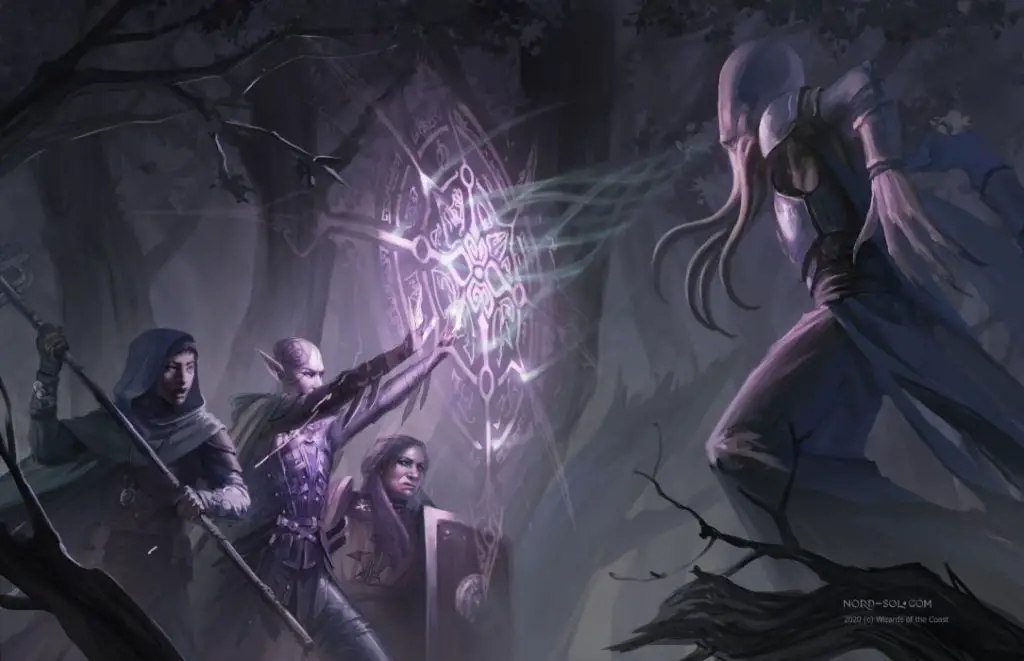
What Is Abjuration Magic?
First up we have the magic from the School of Abjuration.
Abjuration magic is based on spells that are defensive in nature. These spells may function by increasing a character’s Armor Class, negating some other magical effect, or preventing access to something (such as a chest or room).
As spellcasters (particularly wizards) are notoriously squishy, very few would not include at least one or two Abjuration spells in their repertoire.
It’s not paranoia! It’s preparation!
Some great examples of Abjuration magic are Shield, Counterspell, and Lesser Restoration.
Sure, this might not be one of the flashier schools of magic, but it’s still incredibly powerful. Picking the right defensive spells can turn otherwise impossible fights into resounding victories for you and your party!
What is Conjuration Magic?
Next up is the School of Conjuration.
Conjuration magic produces things (objects and even creatures!) out of thin air. If you want to make a “summoner” type character, Conjuration is your go-to school.
Plus, as your spellcaster levels up, Conjuration also allows for incredibly convenient travel with the use of spells like Teleportation Circle or Planar Shift.
Examples of Conjuration magic in action include Create Food and Water, Conjure Woodland Beings, and Web.
One big thing to be aware of with Conjuration magic is that many of its spells require you to maintain concentration. While spells with this requirement are found in all of the schools of magic, Conjuration magic particularly requires your full attention!
Related: You can learn how concentration works here!
What is Divination Magic?
Fans of Divination magic know above everything else that knowledge really is power.
Using Divination magic, casters are able to spy on others, communicate with powerful beings, read others’ thoughts, and uncover secrets in the world around them.
With Divination spells’ ability to dig deep beneath the surface of the story to potentially alter the future, many Dungeon Masters are just as excited as players when Divination magic is being used!
Practitioners of Divination magic often carry special tools to aid them in their casting. Crystal balls, Tarokka decks (tarot cards), and carved stone runes are all common within Divination circles.
Examples of Divination magic include Identify, Comprehend Languages, Commune, and Scrying.
Divination magic is great at solving problems, especially if the party tends to plan and play more strategically.

What is Enchantment Magic?
Prefer to control your enemies rather than blow them to bits? The School of Enchantment may be for you!
Enchantment magic realizes that it’s often better to make a new friend than to simply slay an enemy.
With the ability to affect others’ minds with spell effects ranging from changing their mood, applying game-changing buffs and debuffs, or just outright bending them to your will, the uses of Enchantment magic are limitless.
A few standout Enchantment spells are Bless, Dominate Person, and Suggestion.
Bards tend to be particularly fond of enchantment magic and frequently weave it into their performances. It’s also common among Fey creatures as well as more diabolical enemies who prefer to ensnare the minds of their victims (like Mind Flayers and Aboleths.)
What is Evocation Magic?
The School of Evocation magic is likely what most players envision when they think of Wizards and Sorcerers. There’s nothing wrong with a classic!
Evocation magic harnesses the sheer power of the elements to create massively damaging spells. Not surprisingly, Evocation spells find the most application as artillery for military forces.
While there are a few exceptions (like Cure Wounds or Light), this school is mostly famous for classic spells like Fireball, Lightning Bolt, and Magic Missile.
What is Illusion Magic?
Much like Enchantment magic, Illusion spells excel in their ability to confuse enemies and subtly control the battlefield.
If the thought of making yourself invisible, causing confusion amongst your enemies, and (let’s be honest here…) endless practical jokes is appealing to you, you may find yourself drawn to the School of Illusion.
This school is particularly associated with fey creatures and gnome wizards who combine their gift for spellcasting and love of practical jokes together to maddening effect.
With spells that give you the ability to change your appearance and play all sorts of mind games with those around you, Illusion magic allows for some particularly interesting roleplaying opportunities.
Examples of Illusion spells include Invisibility, Mirror Image, and Disguise Self.
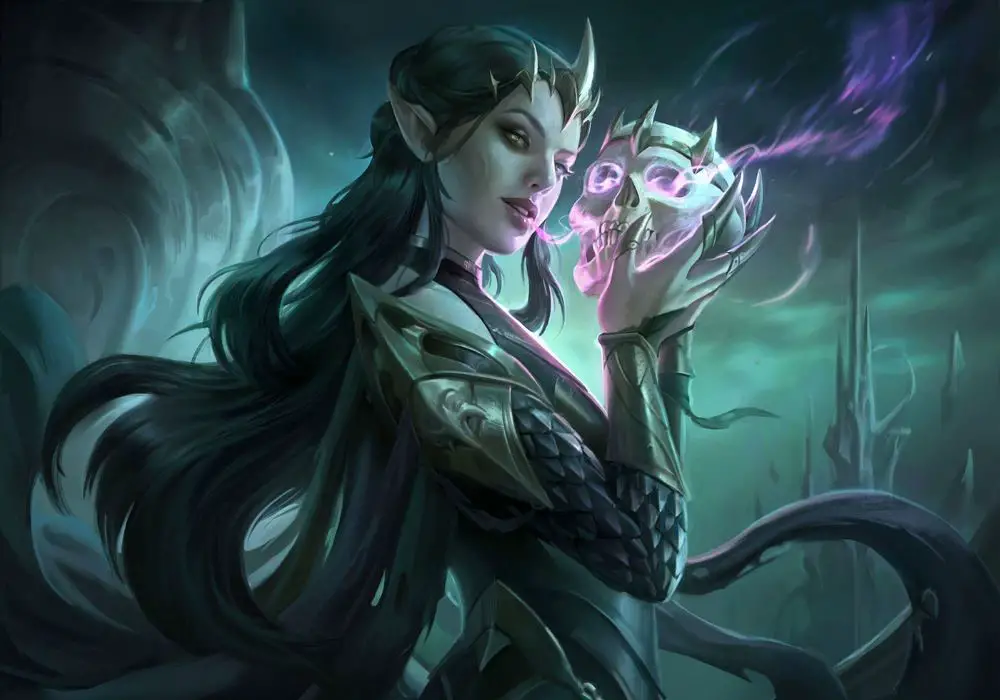
What is Necromancy Magic?
For those who don’t fear the darker side of magic, we now arrive at the school of Necromancy.
Countless debates have been had, both in-game and out, about the morality of Necromancy. As a school that concerns itself with studies about life, death, and strange hybrids of the two, it’s nothing short of controversial.
Opponents of Necromancy view it as inherently evil and a type of perversion of the natural order of things.
Meanwhile, many supporters of the school of Necromancy view themselves as pragmatists and misunderstood pioneers. After all, “waste not want not”, right?
Either way, students of the School of Necromancy walk a fine line in their arcane pursuits. Flaunting these spells is almost guaranteed to disturb many NPCs. (Probably even some party members too, if we’re being honest!)
Of course, it’s the spells that allow the caster to raise and animate corpses that are what Necromancy is most known for.
However, Necromancy spells come in a wide variety of other flavors. Some are used to preserve bodies and restore life while others are capable of dealing massive amounts of damage or weakening enemies.
Some common Necromancy spells include Animate Dead, Revivify, Ray of Enfeeblement, and Inflict Wounds.
What is Transmutation Magic?
At last, we come to a personal favorite: the School of Transmutation.
The School of Transmutation acknowledges that change is one of the only guaranteed things in the world. These spells are handy for making things into something else or defying the limits of what would otherwise be physically possible.
In many ways, this just might be the most “practical” of the schools of magic in D&D. It’s also where many of the best buffs in the entire game are!
With spells that allow the caster to change the physical world around them to suit their needs, Transmutation spells focus heavily on utility to overcome challenges and control the battlefield.
But don’t be fooled! Spells like Disintegrate and Erupting Earth prove that this school isn’t scared to roll damage dice too!
Popular examples of Transmutation spells include Polymorph, Haste, Fly, and Telekinesis.
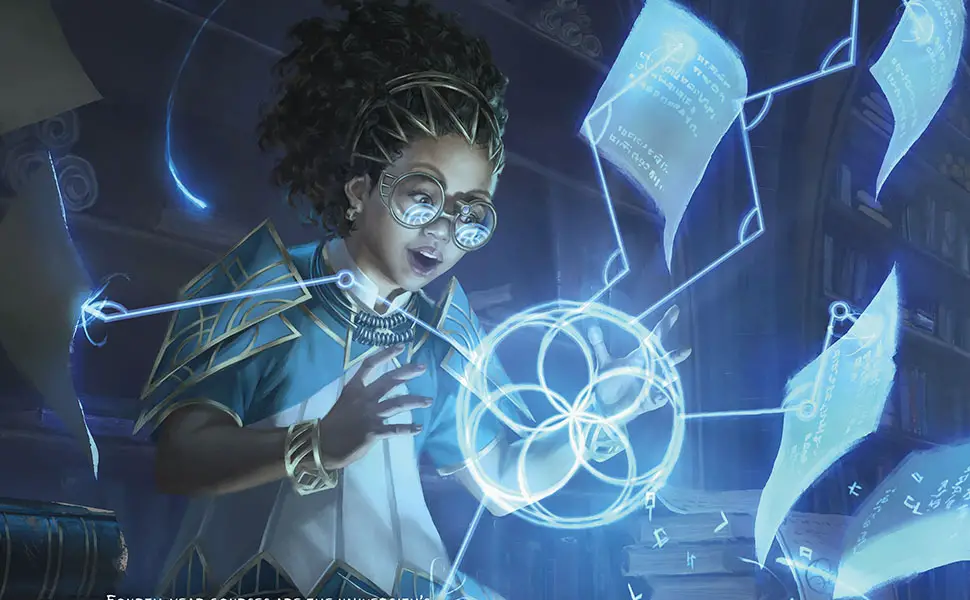
Frogs and the Schools of Magic in D&D 5e
There’s a fun little device for remembering the schools of magic in D&D. If you’re like me, being able to visualize a situation helps it all stick in the memory a bit better.
Specifically, I’m talking about the age-old joke about what each school of magic does with a frog.
This is especially useful if you’re a DM and a player casts Detect Magic on something and wants to know what school of magic it is. Instead of scrambling to figure it out, just think of what the magic they’re detecting would do with a frog.
See here:
- Conjuration: Summons a frog.
- Abjuration: Protects the frog.
- Evocation: Explodes the frog.
- Necromancy: Brings the frog back to life.
- Illusion: Makes someone believe that there’s a frog there.
- Enchantment: Makes someone believe that they are the frog.
- Transmutation: Actually turns them into a frog.
- Divination: Knows that it was actually a toad the entire time.
It may be silly, but it helps!
Conclusion – The Schools of Magic in D&D 5e
I hope this article has helped you learn the differences between the different schools of magic in D&D. It can be a little overwhelming at first, but knowing what each of these schools is about is incredibly helpful!
For this article, I focused on the 8 core schools of magic.
However, fans of Critical Role might be familiar with Dunamancy magic which was introduced in the Explorer’s Guide to Wildemount setting. You can learn more about Dunamancy here!
Which school of magic in Dungeons & Dragons 5e is your favorite? Let’s chat in the comments!
Want all the latest player guides, DM tips, news, reviews, and more for D&D 5e? Sign up for the Tabletop Joab newsletter below!
You can also follow me on Facebook and Twitter.
If you found this article helpful and want to support the site, you can buy me a coffee here! (It’s not expected, but very appreciated!)




